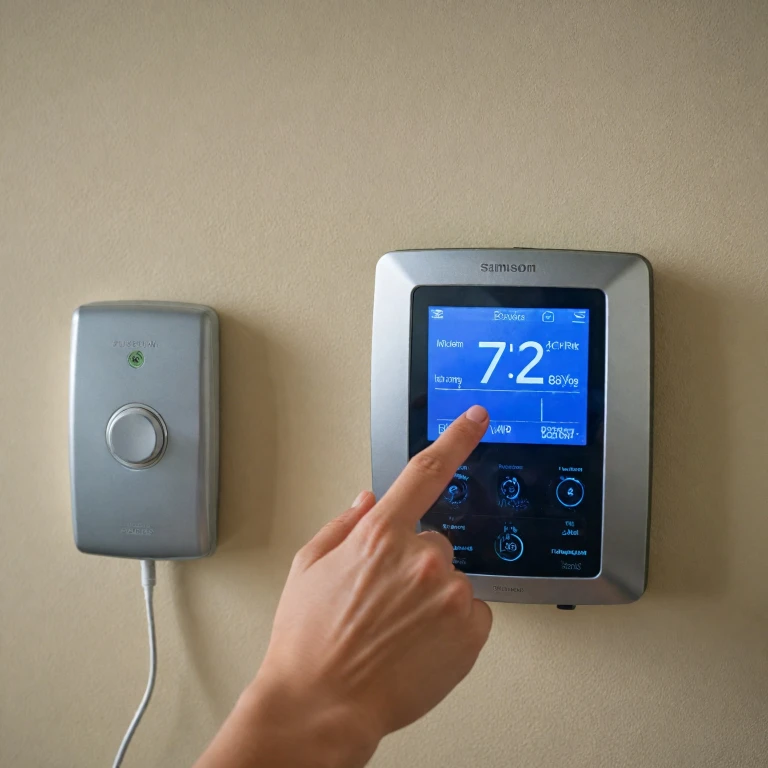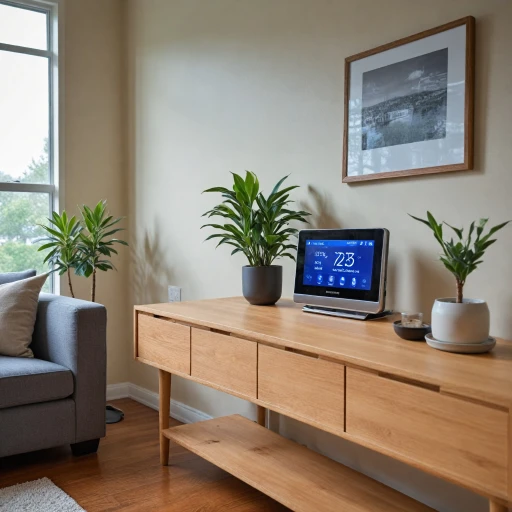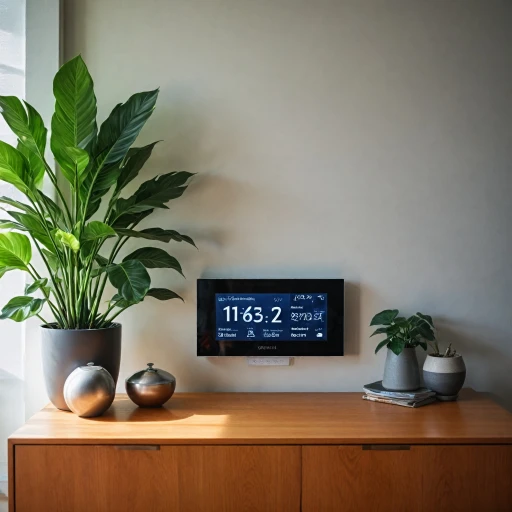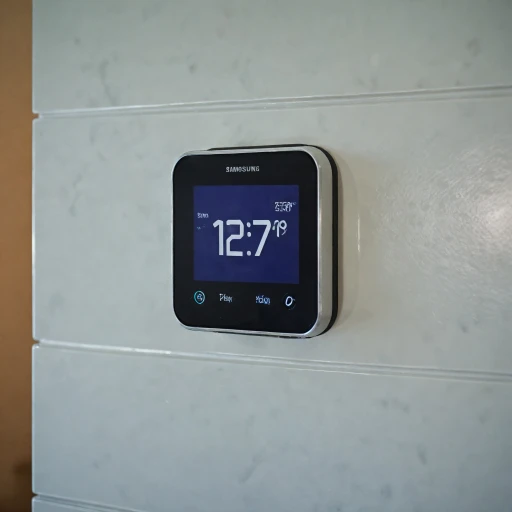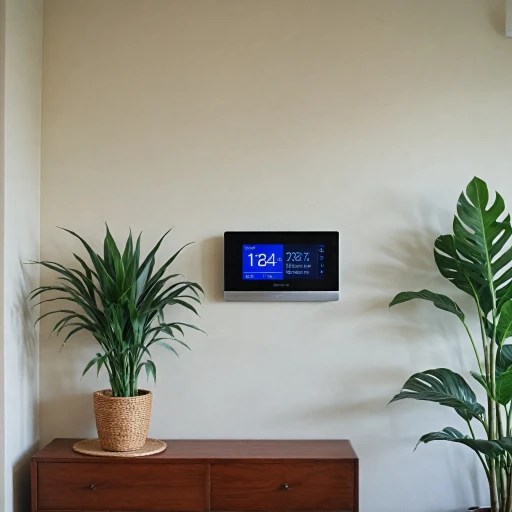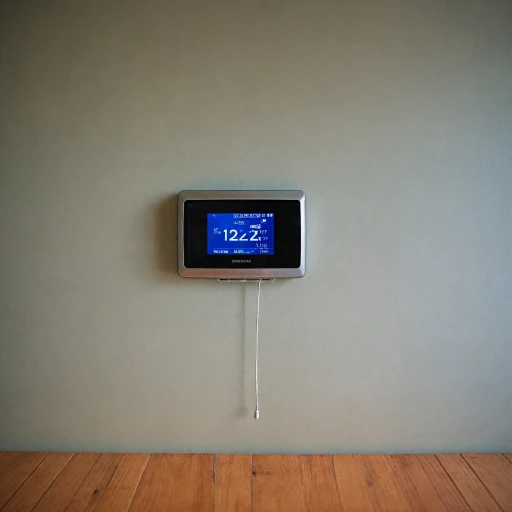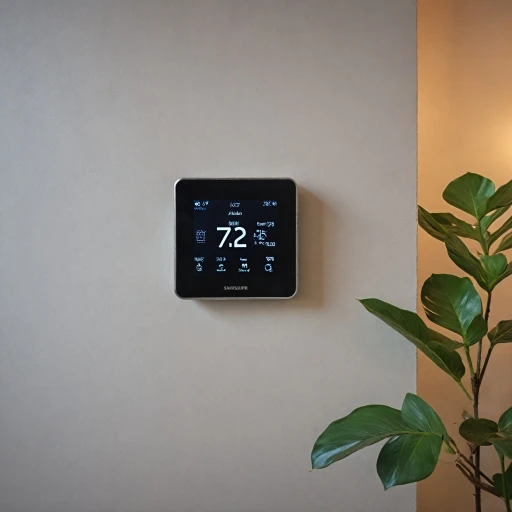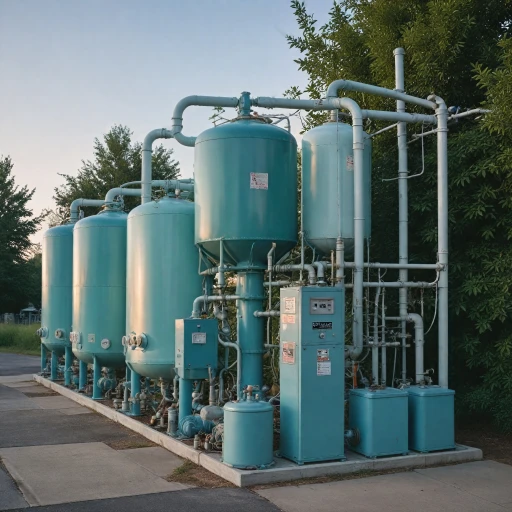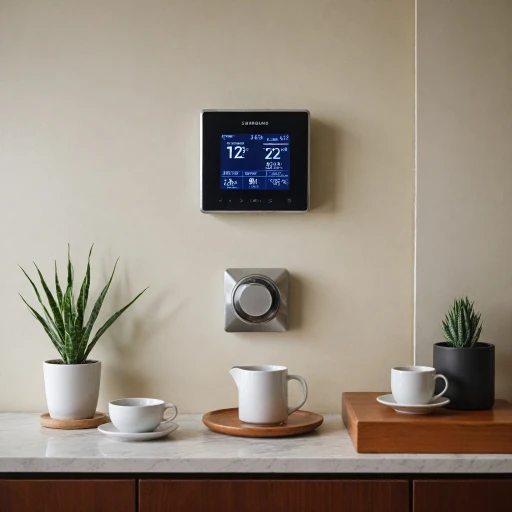
Understanding the Honeywell 5000 Thermostat
Introduction to the Thermostat Honeywell 5000 Series
The Honeywell FocusPro 5000 Series programmable digital thermostat offers a range of features aimed at maximizing comfort and energy efficiency in your home. This series thermostat is designed for ease of use, making it an excellent choice for both novice and experienced users.The Functionality of a Programmable Digital Thermostat
A programmable thermostat, like the Honeywell 5000, enables users to set heating and cooling schedules tailored to their lifestyle, helping to save on energy bills and optimize indoor comfort. With its FocusPro programming, you can establish a setup that automatically adjusts temperatures at different times of the day or week. This function can be particularly beneficial for managing energy costs during peak usage times.Key Features and System Compatibility
This digital thermostat supports most 24V heat and cool systems, including heat pumps and auxiliary heat. The setup function helps ensure compatibility with various system types, such as single-stage or multi-stage systems. During the installation process, you'll encounter the changeover valve terminal, essential for ensuring seamless operation between heating and cooling modes. If you're interested in learning more about thermostats, you might want to check out the understanding of other thermostat models.User-Friendly Interface and Manual Control
The Honeywell 5000 comes with a user-friendly interface, which simplifies the manual control of the fan and heat settings. The installer setup process is straightforward, and the thermostat includes an installation instructions manual to aid in the process. This makes the FocusPro series a preferred choice for those looking for straightforward, reliable control options without complicated interfaces. With these features in mind, the Honeywell 5000 programmable thermostat is a valuable addition to any home, combining advanced technology with straightforward functionality for both heating and cooling requirements.Preparing for Installation
Gathering the Right Tools and Materials
Before diving into the installation process of your Honeywell 5000 Thermostat, it's essential to have all the necessary tools and materials at hand. This preparation step will not only save you time but also minimize any surprises during the installation. Typically, the tools required include:
- Philips and flathead screwdrivers
- Wire cutter and stripper
- Drill with appropriate bits
- Level (to ensure accurate installation)
- Voltage tester (to ensure electrical safety)
Besides these tools, make sure you have the installation instructions and any additional components that may be necessary for your specific system type.
Identifying Your Current System
Recognizing the type of HVAC system you’re dealing with is crucial. The Honeywell 5000 series thermostat can support a variety of systems, such as heat pump, auxiliary heat, and standard setups with different changeover valve configurations. Understanding whether your setup includes a heat cool or heat pump system is essential for proper installation. Knowing the presence of a changeover valve terminal can help streamline the process.
Reviewing the Existing Wiring
Before proceeding, examine your existing thermostat wiring. Document each wire's connection to its terminal and its respective function. Having a clear photo or diagram will ease the transition to your new programmable Honeywell thermostat.
Reading the Manual
The manual focuspro booklet provided with your thermostat offers valuable insights. It covers both the installer setup and series programmable thermostats in detail. Never overlook this step, as it ensures you've covered everything from the basic functions to advanced installation instructions. If any confusions arise, referring to this comprehensive guide on thermostats can also provide additional clarity.
Step-by-Step Installation Process
Setting Up the Honeywell 5000 Thermostat
Installing the Honeywell 5000 thermostat is straightforward if you follow the instructions carefully. This programmable series thermostat, part of the Honeywell FocusPro line, simplifies the process of managing your home's temperature with its digital interface. Here's a step-by-step guide to ensure a seamless setup.Gathering the Tools and Materials
Before you begin, prepare your workspace and gather necessary tools and materials. You will need:- Screwdriver
- Drill (if needed for mounting holes)
- Level
- Tape measure
- Wire stripper
- Honeywell 5000 thermostat installation instructions
Mounting the Thermostat Base
- Turn Off the Power: Begin by switching off the power to your heating and cooling systems at the breaker box to avoid any electrical mishaps.
- Remove the Old Thermostat: Unscrew and carefully detach your existing thermostat from the wall. Make sure to note which wires connect to which terminals; labeling them will help with the new installation.
- Prepare the Wall: If necessary, patch any holes or use a new wall plate to cover them. Use a level to ensure the thermostat base will be mounted evenly.
- Secure the Base: Attach the base of the Honeywell 5000 thermostat to the wall. Use the existing wiring to connect at least the common wires: C (Common), R (Power), W (Heat), Y (Cool), and G (Fan). Depending on your system type (e.g., heat pump), additional connections may include an auxiliary heat terminal or a changeover valve terminal.
Connecting the Wires
Follow these steps to connect your Honeywell 5000 series programmable thermostat.- Identify the Wires: Match each wire to the corresponding terminal on the base. Ensure the correct ones are paired – such as the R wire to the R terminal.
- Tighten Terminal Screws: Carefully insert each wire into its respective terminal by following the installation instructions. Use a screwdriver to secure each one firmly in place.
- Ensure Correct Connections: Double-check your connections against the manual focuspro installation diagram for accuracy.
Attaching the Thermostat to the Base
Once the wiring is completed, attach the Honeywell 5000 thermostat head to its base.- Secure the Thermostat: Align the thermostat unit with the backplate and press it into position until you hear it click into place.
- Restore Power: Turn the power back on at the breaker to start the thermostat.
Configuring the Settings
With power restored, follow the on-screen prompts to complete the thermostat *setup function*. Adjust settings for system type, stage (single or multi-stage heating), and manual or programmable mode as needed.- System Tests: Conduct a quick test of the heating, cool, and fan operating modes to ensure everything functions correctly. Adjust the changeover valve setting if you are using a heat pump system.
Common Installation Challenges and Solutions
Troubleshooting Common Setbacks During Honeywell 5000 Installation
When installing your Honeywell 5000 thermostat, you might encounter a few hurdles. Being familiar with these common challenges and their solutions can streamline your setup and ensure optimal performance.- Wiring Confusion: The Honeywell FocusPro series thermostats often involve various terminal connections. First, refer to the thermostatic manual to identify the heat pump system's valve terminal, especially if you have a programmable system with auxiliary heat. This ensures that operational stages like heat and cool modes function seamlessly. If you're dealing with a dual system type, a changeover valve might be necessary for transitioning between heating and cooling.
- Misconfigured Settings: In the installer setup mode, accessing the digital thermostat's setup function allows you to fine-tune the operating features. Press 'advance' in the setup to adjust the programmable functions suitable for your home's temperature needs. Sometimes, users might mistakenly bypass the fan control or heat settings, leading to operating inefficiencies.
- Display Issues: If the programmable digital display doesn't illuminate or shows incorrect data, revisit the initial installation instructions to confirm correct power connection. The Honeywell FocusPro installation requires accurate power setup to maintain digital thermostat reliability.
- Operational Errors: Ensure that the series thermostat is indeed compatible with your HVAC system. For instance, a heat-cool setup might require specific installer preferences like recognizing additional stages in robust HVAC systems or managing a manual focuspro for precise temperature management of your home environment.
Optimizing Your Thermostat for Energy Efficiency
Maximizing Energy Savings with Your Thermostat
It's important to optimize your Honeywell 5000 Thermostat carefully to enjoy energy savings and efficient operation.- Choosing the Right System Type: Once the installation is complete, select the correct system type that suits your home. Determine whether your setup includes a heat pump, auxiliary heat, or a changeover valve, which will influence how your thermostat operates.
- Adjusting the Changeover Valve: The changeover valve terminal configuration plays a critical role in maximizing HVAC efficiency. Make sure the valve is properly set for your heat or cool system requirements. This is particularly important in heat pump systems where reverse operation is common.
- Focus on Programming: Use the programmable digital features for more control. Set up advanced schedules in the series programmable mode to maximize energy-efficiency. The Honeywell FocusPro series allows you to tailor heating and cooling cycles according to daily routines.
- Leveraging Installer Setup Options: Explore the installer setup menu to refine thermostat functions. The installer setup can help adapt and optimize the function of your digital thermostat based on your specific setup requirements.
- Fan Control Understanding: The fan control option can enhance comfort and energy efficiency. Consider whether you want the fan to operate continuously (for air circulation) or in sync with heating/cooling stages.
- Manual Adjustments: Whenever necessary, use the manual FocusPro adjustments to override pre-programmed settings. Remaining flexible with adjustments can lead to additional energy savings.
- Monitoring Energy Usage: Regularly monitor your system’s performance. An efficient operating thermostat will often result in noticeable differences in utility bills, reflecting better energy management.
Maintaining and Troubleshooting Your Thermostat
Regular Maintenance for Optimal Performance
Ensuring your Honeywell 5000 thermostat operates efficiently involves regular maintenance. This programmable digital thermostat requires minimal upkeep, but a few routine checks can prevent potential issues. Start by examining the thermostat's physical condition. Dust and debris can accumulate over time, affecting its performance. Gently clean the exterior with a soft cloth and ensure the screen is free from smudges.
Troubleshooting Common Issues
Even with proper installation, you might encounter some challenges with your Honeywell FocusPro series thermostat. A common issue is the thermostat not maintaining the desired temperature. This could be due to incorrect setup functions or an improperly configured system type. Review the installation instructions and ensure the correct heat cool settings are applied.
If the fan or auxiliary heat functions are not responding, check the terminal connections. Loose or incorrect wiring can disrupt the thermostat's operation. Refer to the manual FocusPro for guidance on checking these connections. Additionally, ensure the changeover valve is functioning correctly if you have a heat pump system.
Updating and Adjusting Settings
To keep your series thermostat running efficiently, periodically review and update its settings. This includes checking the programmable settings to ensure they align with your current schedule and energy-saving goals. The installer setup allows you to adjust these settings easily.
If you notice any discrepancies in temperature readings, recalibrate the thermostat. This is particularly important if you experience significant temperature fluctuations. The manual provides detailed instructions on how to perform this task.
When to Seek Professional Help
If troubleshooting steps do not resolve the issue, it may be time to consult a professional installer. Complex problems, such as a malfunctioning valve terminal or persistent operational errors, might require expert attention. A certified technician can diagnose and fix issues beyond basic troubleshooting.
